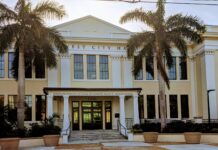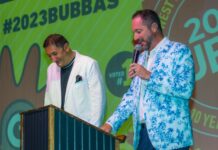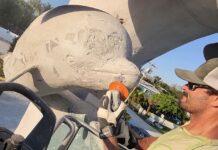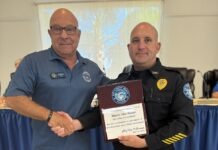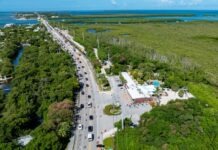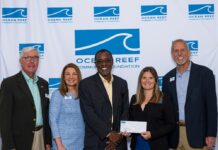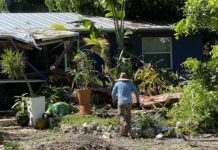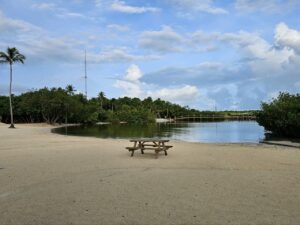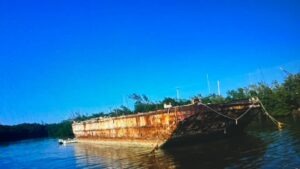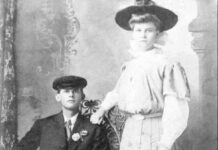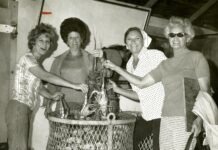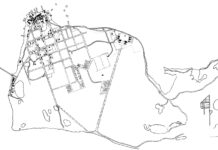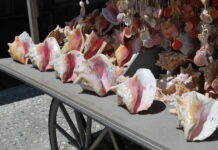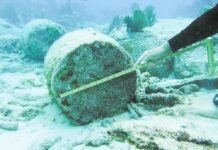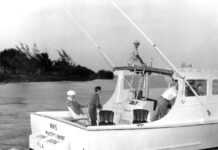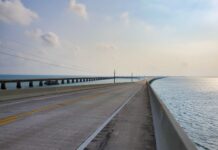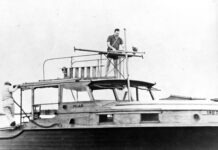It is about that time of year when the islands become flooded with the happy feet of friends, family and tourists who afford many of us the opportunity to call these islands home.
Inevitably, you will be asked for suggestions about things to do.
Indeed, the island chain’s natural wonders should be heralded — one thing that makes these islands special is the water, and every effort should be made to experience the Atlantic Ocean, Florida Bay or the Gulf of Mexico. Fish the humps, reef line, shipwrecks or Florida Bay’s backcountry. Spend some time with your face in the water while snorkeling or diving.
Sit at a tiki bar, catch a sunset and hope you are lucky enough to glimpse that atmospheric phenomenon that occasionally occurs when the last of the sun dips behind the far edge of the horizon, and an emerald green flash horizontally zips and disappears — I’ve never been lucky enough to see it.
Dip spiny lobster in the melted butter, put the mallet to a stone crab claw and crack its spotted shell; sip the rum runner, nibble on a conch fritter and gently slide a fork filled with a wonderful bite of that sweet tartness that is Key lime pie between your lips. Also, promote the local history.
Because Key Largo claims to be the Dive Capital of the World, I suggest visiting Islamorada’s History of Diving Museum. Exhibits depicting the evolution of underwater exploration alone make it worth a stop. Like the diving museum, Islamorada’s Upper Matecumbe Key is home to the Florida Keys History & Discovery Center. The facility is loaded with local history.
For eight years, I worked as the curator/historian and developed the historical exhibits on the first floor. My favorite is the Indian Key model; it is the only one like it in the world and depicts the island as it looked before the southernmost attack during the second escalation of the Seminole War.
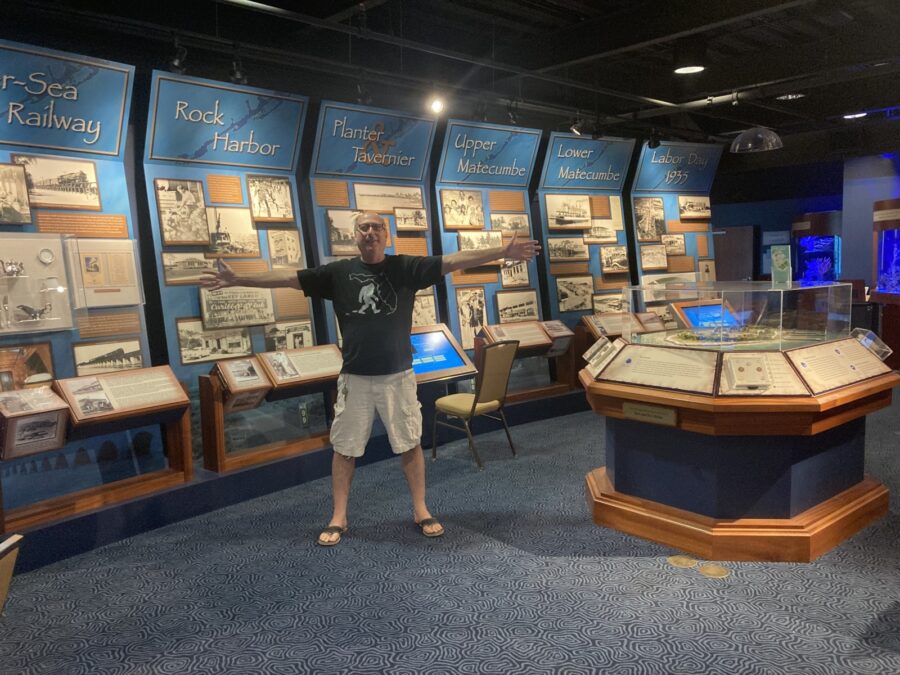
In the Middle Keys, mark a trip to Pigeon Key on any suggested agenda. Pigeon Key, the island found underneath the old “Seven Mile” railroad bridges, is home to some of the oldest and most historic buildings outside of Key West. Once the headquarters for railroad workers during the construction of the Key West Extension of Henry Flagler’s Florida East Coast Railway, Pigeon Key remains a ghost town from the railroad years. Not only are many of the structures built circa 1910 still standing, but one of them contains a great little museum showing the history of the island and its role during the construction of the railroad. Pigeon Key can be a grander excursion. Pack a lunch, bring your snorkel gear and explore the shallows around the island, too.
And then there is Key West, an island filled with good vibes, multiple museums, Civil War-era forts and walking tours curated for the history, haunted, and literature crowd. If you like a little haunting with your history, visit Robert the Doll at the Fort East Martello Museum. Not only is Robert one of the most haunted dolls in the world (and one who has its own social media following), but Fort East Martello is not just a Civil War-era fort filled with history; it is home to one of the best haunted tours Key West has to offer (ghostkeywest.com).
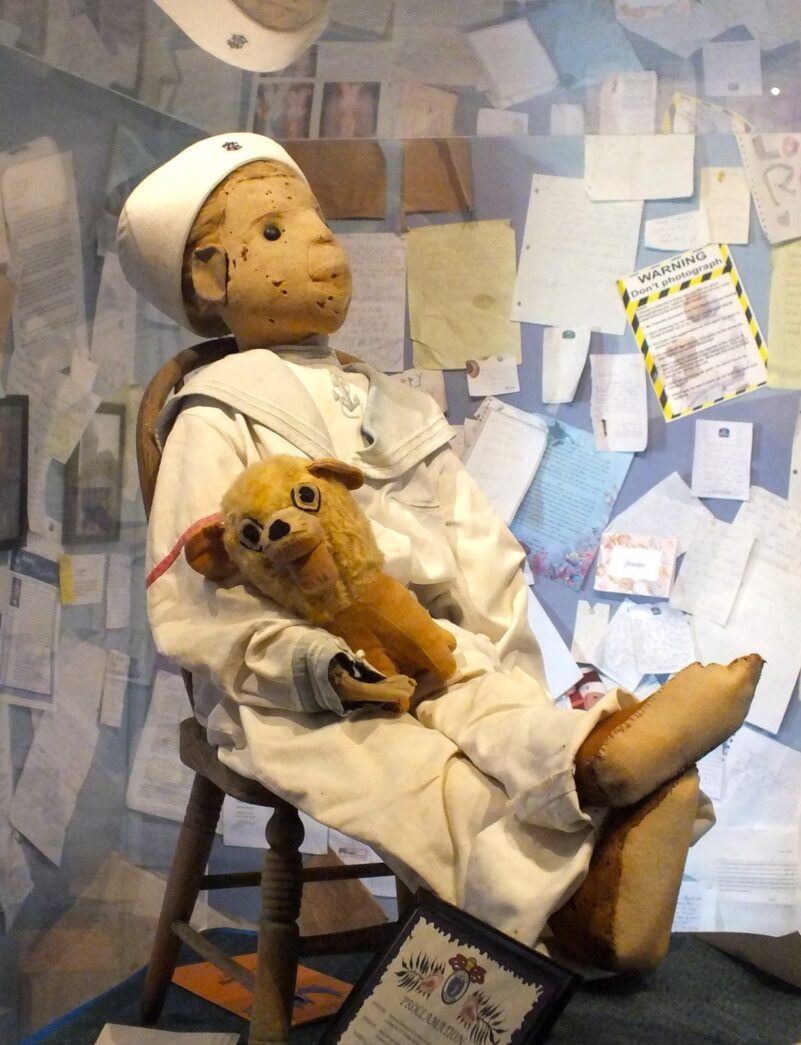
One of the great side trips, especially for those staying in Key West, is the trek to the Dry Tortugas. If time and the weather cooperate, suggest a trip to Garden Key. Though never completed, it is home to the largest brick structure in the United States. The variegated brick Fort Jefferson is perhaps most notably recognized as the place where Dr. Samuel Mudd was sent after lending aid and comfort to John Wilkes Booth after he assassinated President Abraham Lincoln. Garden Key also offers fabulous snorkeling right off the beach and is an excellent place for those who love bird-watching.
One of the things that Florida does well is create state parks, and the Keys have some fantastic contributions. Another idea is to suggest a visit to one of the state parks. Dagny Johnson Key Largo Hammock Botanical State Park is found in North Key Largo, on County Road 905, near MM 106. When a sprawling resort community called Port Bougainville was nearly developed here in the early 1980s, the endangered Key Largo wood rat helped save the day and this critical sub-tropical West Indian hammock habitat. The 2,421-acre park was established in 1982 and features walking trails where bird and butterfly watchers like to wander, point and stare. Bring water and bug spray to experience the native Florida Keys.
One of the things that is easy to forget is that 100,000 years ago, the islands were underwater and home to a flourishing coral reef. It is one thing to tell someone that the island chain was once a coral reef. Another thing is standing in front of an 8-foot-tall exposed quarry wall and seeing the fossilized corals embedded within the limestone. To see the evidence firsthand, visit the Windley Key Fossil Reef Geological State Park at MM 85.
For more adventure, paddle out to Indian Key Historic State Park. Found in the Atlantic shallows about a mile from the Overseas Highway at MM 78, the often overlooked island was once the most important island in the Florida Keys, not named Key West. The island is also a bona fide ghost town. Visiting the island, walking down the pathways and past the ruins of a 19th century village is like stepping back in time.
It is an easy paddle away from the kayak launch at Indian Key Fill, or, for those without their own kayak, the Kayak Shack at Robbie’s Marina has all the tools necessary for the adventure. If you come to Robbie’s on a Thursday between 11 a.m. and 2 p.m., I’ll be there talking local history with anyone who stops by, and I hope to see some of you there.
